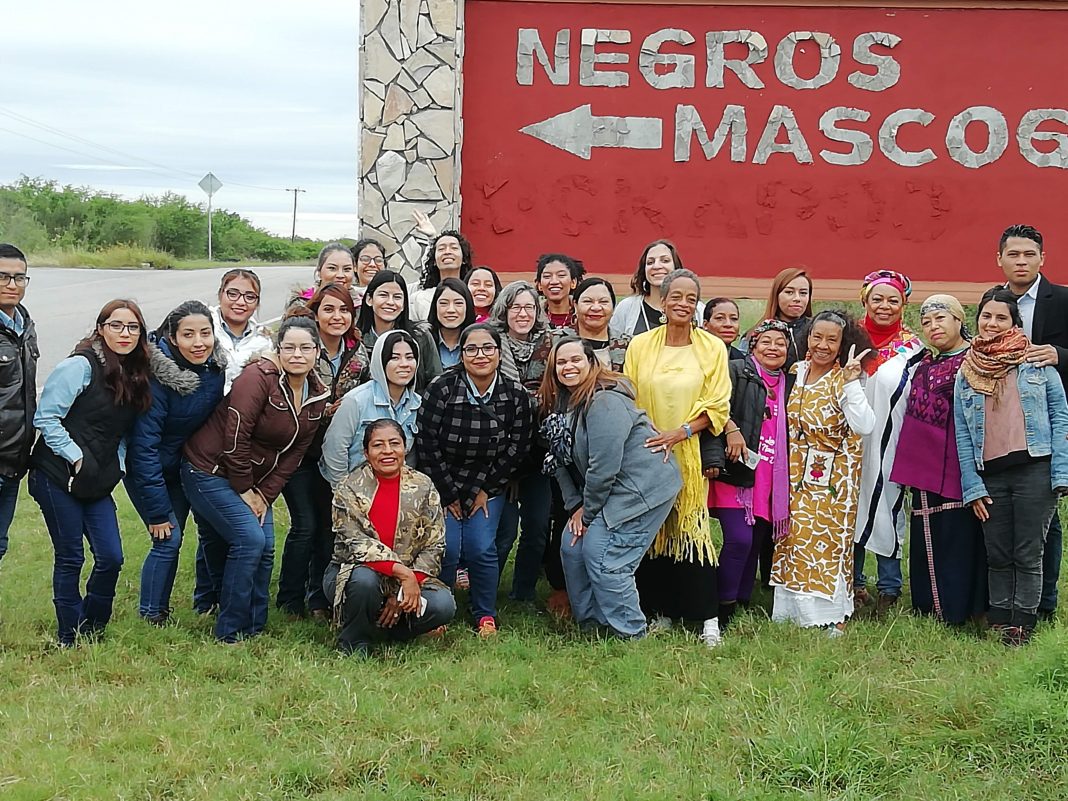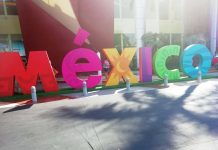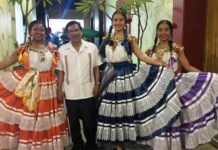The Annual Meeting of the Black Towns was a great learning experience and a “soul-feeding” adventure!
By Professor Alanna Jackson, Ph.D. Candidate, Department of Political Science, Wayne State University, Detroit, Michigan, USA

As part of my doctorate research, I went to the Annual “Encuentro de Pueblos Negros” (Meeting of the Black Towns) that was held in Muzquiz, Coahuila, Mexico, in November 2018. All I can say is, “WOW!” It was such a great learning experience and it nourished my spirit and soul. The event was a celebration of African and Indigenous history and cultures. It is an annual event. You should make plans to attend.
I traveled with two awesome women, Professor Patricia Ann Talley from Zihuatanejo, Guerrero via Southfield, who is an economic development specialist and publishes this online magazine, Imagine-Mexico.com; and Dr. Talia Weltman-Cisneros from the University of North Texas Spanish Department who specializes in Spanish literature and culture and Afro-Mexicans specifically. They are both represent the Dr. Martin Luther King, Jr. Taskforce that created the “Pathways to Freedom Project” which highlights the connections between African Americans and Afro-Mexicans and were presenters at the event.
I want to share this adventure with you.
Day 1 – Arrival was like a Family Reunion!
Arrival on Day 1 was like a huge family reunion. Community members were preparing food for the guests. Everyone was having fun. The greetings were warm and always included an “abrazo” – a hug. It was an amazing “kindship” of people.
We stayed in hotels in the city of Muzquiz and then traveled by bus to the community of El Nacimiento, the home of the “Negros Mascogos” who are descendants of Black Seminoles from the USA who were founders of the town.
Day 1 – “Marcha por la Visibilizacion”
The March for Visibility included delegations from all the places in Mexico where there are Afro-Mexican populations – Guerrero, Veracruz, Oaxaca, Chiapas, and Mexico City.
There were also international delegations from the United States, Colombia, Haiti, South Africa, and Trinidad and Tobago. The march was led by decedents of Black Seminoles from Bracketville, Texas, whose relatives were among the founders of the town. Displays of traditional dress and dance were everywhere. My ‘nephews’ from Guerrero performed the “Danza de Los Diablos.”
Day 1 – Conferences and Workshops
The Conference host was the community of “Negros Mascogos” – descendants of Black Seminoles from the USA. While it was full of fun and culture, the main objective of the conference was to progress the movement for constitutional recognition and civil rights for African decedents in Mexico.
I was surprised to see Afromexicans wearing “Black Lives Matter” T-shirts. The Governor and Mayor attended along with the State Secretaries of Culture and Economy & Tourism. There were presentations by government institutions like the National Institute of History & Anthropology. There were presentations and workshops regarding civil rights, the 2020 census count, women’s issues, economic development, and other important topics affecting the Afromexicans communities.
Academic collaborators, Professors Donaji Mendez Tello, Patricia Ann Talley, and Dr. Talia Weltman-Cisneros presented the research project conducted by the Dr. Martin Luther King Task Force regarding the relationship between African-Americans and Afro-Mexicans, the “Pathways to Freedom Project.”
I am pictured with Senator Susanna Harp; Ismael Bosques Vasquez, the Commissioner of the Negros Mascogos; and Professor Sergio Penaloza, the President of Mexico Negro, A.C., which has been instrumental in leading the cause.
Day 2 – Culture! And a Visit to the Museum of Negros Mascogos
Juan Caballo from the United States led Black Seminoles to Mexico to escape slavery and massacre. He and founded the town of Nacimiento. We visited the local museum that had pictures and documentation about the town’s original inhabitants. The residents are a mixture of African-American and Native Americans and identify as “Negros Mascogos.”
The polka dot dress in various colors is the traditional dress for Mascogos. There is a recipe for “pan de maiz frito”, which is my granny’s hot water cornbread. The connections between the Mascogos as a maroon community to blacks in America are overwhelming. Senor Simon and his family have roots in the founding of the town.
An Awesome Experience!
Finally heading home. I had an awesome learning experience, made great connections, acquired some research nuggets, AND my soul was fed. I am blessed to get to do what I love to do. One day I will actually be able to survive financially and do what I love when I am done being a student and transition to the elusive tenure professor track. I was so honored to accompany two awesome women who helped me navigate, translate, and make connections. Dr. Talia Weltman-Cisneros and Professor Patricia Ann Talley are awesome! Plus they were great roommates!










